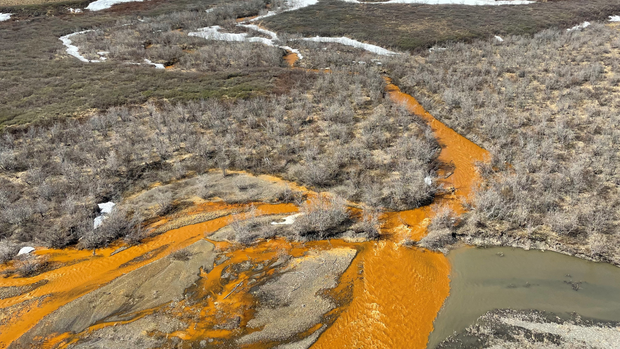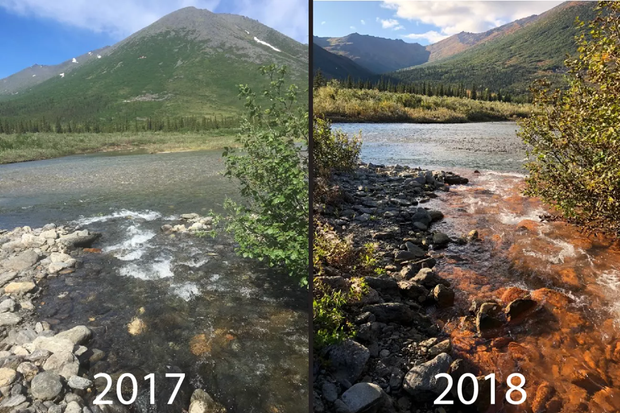
Alaskan Rivers Turning Orange: A New Phenomenon Due to Thawing Permafrost
A series of unusual events have been unfolding in Alaska, where dozens of rivers and streams are turning orange due to thawing permafrost. This phenomenon was first observed in 2018 in the Brooks Range, a remote area known for its pristine waters.
The cause behind this rusty coloration is the release of minerals from the soil as permafrost thaws. The process exposes metals such as zinc, copper, cadmium, and iron to oxygen in a weathering process that increases the acidity of water and dissolves these metals.
The orange hue is not only an aesthetic concern but also poses potential risks to drinking water and fisheries. When mixed with other rivers or streams, the metals can become even more potent, impacting aquatic health.
Researchers from various institutions have been closely studying this phenomenon to understand its long-term implications. The team includes scientists from the National Park Service (NPS), US Geological Survey, and University of California Davis.
The orange rivers are a seasonal occurrence, typically appearing during July and August when the soil is thawed the deepest. This issue is slowly propagating from small headwaters into bigger rivers over time.
The researchers are working closely with tribal liaisons in Alaska to ensure local communities receive accurate information on this developing phenomenon. They also aim to better understand the implications of changing water chemistry in areas with continuous permafrost, which includes Arctic regions such as Alaska, Canada, Russia, and parts of Scandinavia.
The Arctic is warming at least two to three times faster than the rest of the planet. As a result, we can expect these types of effects to continue.
This phenomenon is not unique to Alaska; similar occurrences have been reported in Siberia and other Arctic regions. The researchers believe that this could be an early warning sign of more significant changes to come as permafrost continues to thaw.







